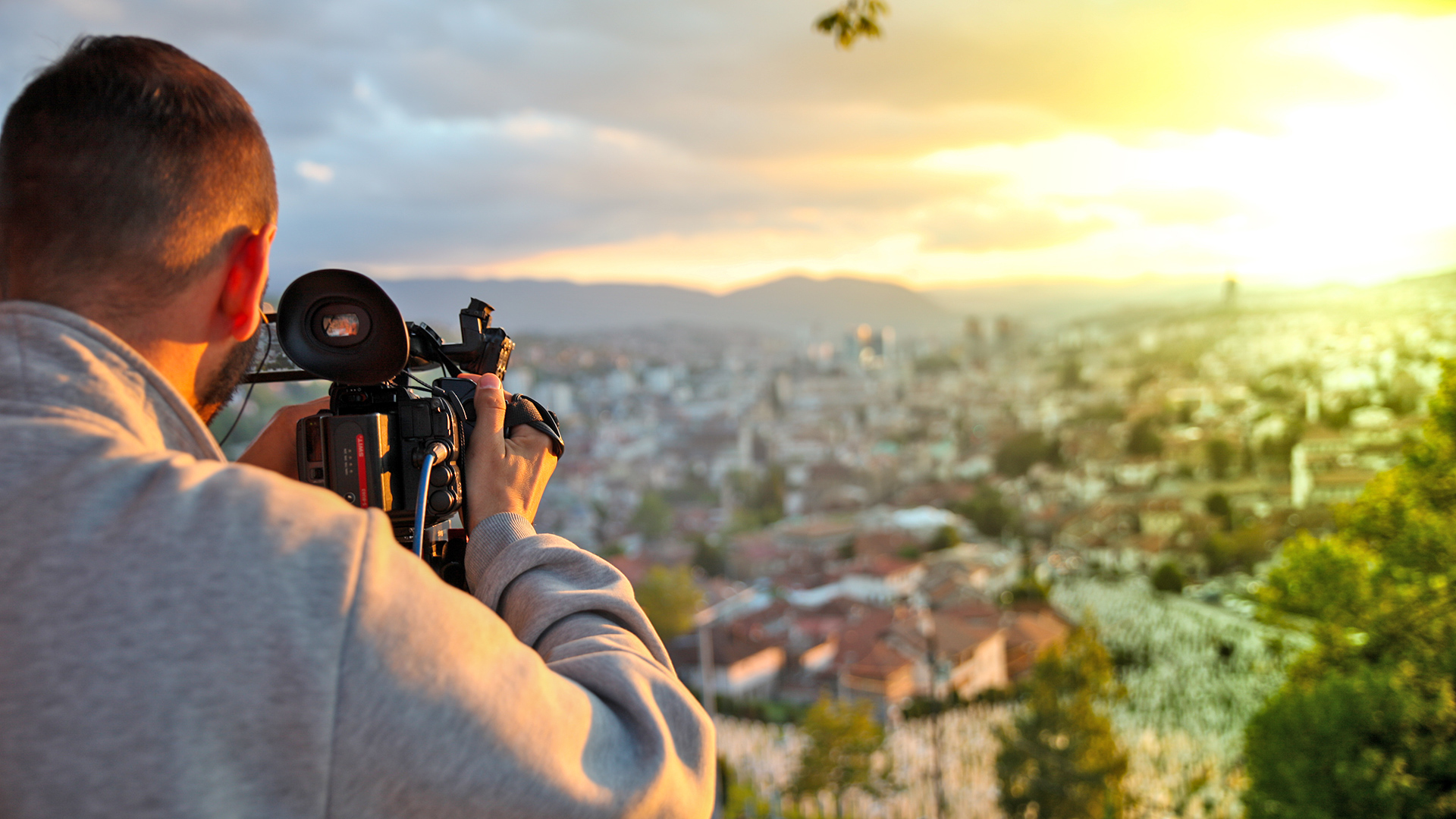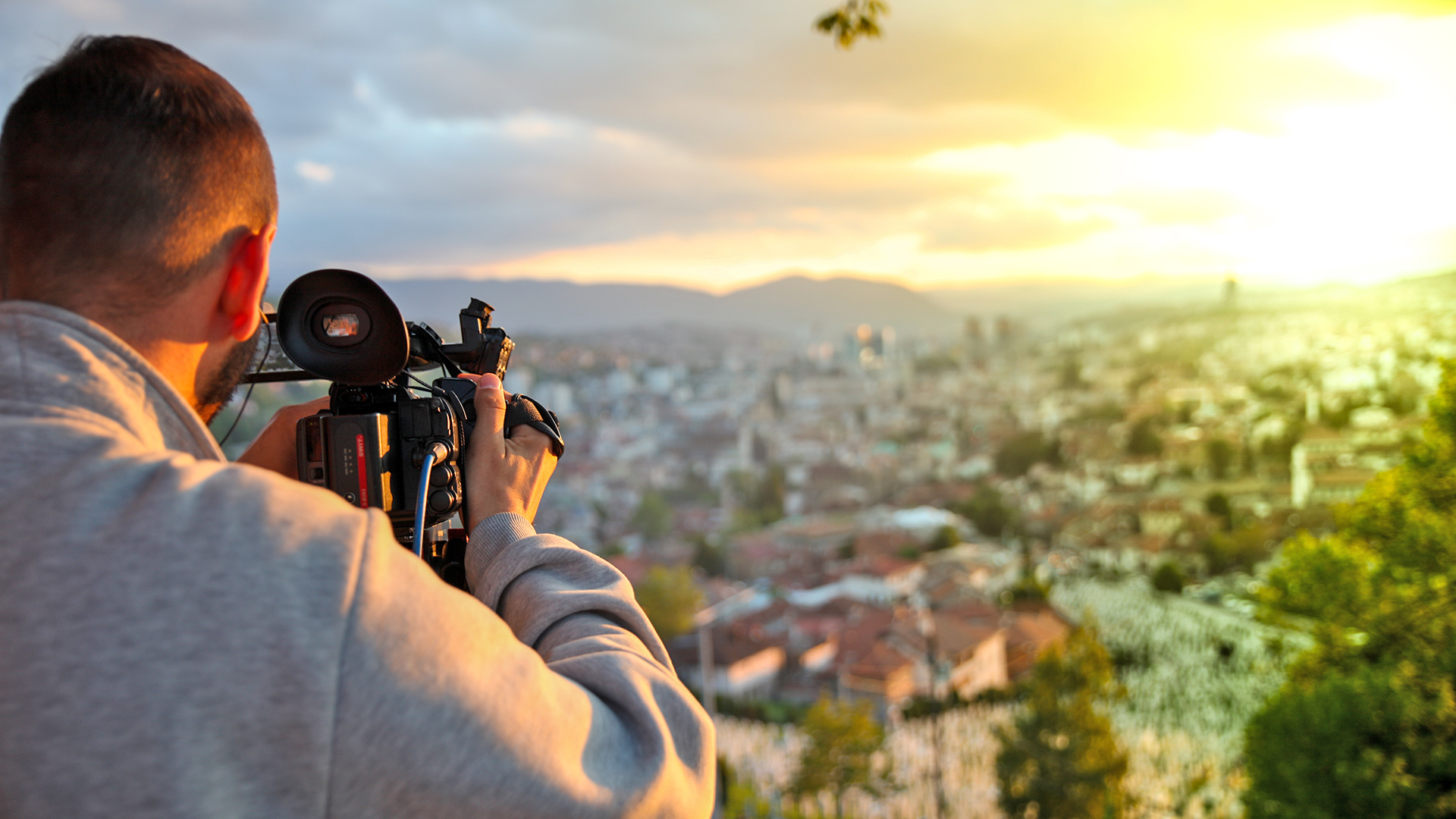

We see them all the time. The camera demo reel of sunsets, twinkling city lights, sun filtering through the forest, beautiful women in floaty gowns, the beach at dusk, craggy old men’s faces… But such reels tell you nothing about what the camera is like to work with.
If you can’t get beautiful shots of a sunset in an exotic location, the problem is not with the camera. Nor do any of these reels tell us much about the camera – if they tell us anything, it is the market the manufacturers are aiming for.
You can’t blame manufacturers for gorgeous sizzle reels, but they don’t reveal a lot of the key elements of a camera – the ergonomics, reliability, versatility of the lens mount, the range of codecs, how it operates challenging or uncontrollable conditions and, crucially, what it actually feels like to use. As movies, showreels seldom engage. We don’t expect them to – they are tasteful, beautiful and lifeless. And pictures that are merely pretty soon get very dull.
But this is not critique of showreels – they are what they are. What I am more concerned about is that I see the showreel mentality creeping into short films. And I am going to suggest concentrating too much on beautiful pictures can be a bad thing. Ironically, some of the most discussed programmes on this website, like HBO’s Chernobyl and the penultimate episode of Games Of Thrones, had particularly murky images that you would never see on a showreel. But in their context, they worked great. They told the story supremely well.
If you work out what camera you want from looking at showreels, if you want the prettiest possible images, it just might lead you down the wrong path. If you want to isolate your subject with beautiful bokeh and blurred backgrounds, you might be convinced that large sensors and fast prime lenses are the only way to go. If the only cameras you can afford that offer that were designed to shoot stills, you will need some sort of rig, an add-on monitor and an audio recorder. If you want to preserve every pixel you might need want to replace that audio recorder and monitor with an external video recorder.
You might end up with a camera that seems great value for money and takes beautiful pictures but is clumsy to operate in practice. Or, from my point of view, completely useless.
Prejudice or style?
OK, I have to admit I have prejudices or, to put it another way, a style. I entered this business through shooting 16mm and 2/3” video where every camera, whether you were shooting drama or docs, came with a zoom lens. Primes were used generally when you had to work in low-light situations – in the days of standard definition, the nuances of the look of different lenses was largely academic.
Currently what I shoot is mostly a combination of observational documentary and performance. For this sort of work, a long range zoom is a necessity; I need to go from tight to wide in the space of a few seconds, even if the zoom movement itself is going to be cut out. Even in drama, the ability to quickly tweak the frame without having to move the camera or change the lens can be a huge convenience. I like to be fast and flexible. I can put up with the occasional blown highlight or noise in the shadows if the camera ergonomics are right, if I can tell the stories I want to tell. But lightweight, affordable, long range, 4K capable zoom lenses only exist on fixed-lens cameras.
I fully appreciate not everybody works like this, but I would just make an appeal that you should let your style determine your kit, not the other way round.
Seeing what your character doesn't
It’s not just the lack of a decent zoom lens that can be a problem if you end up with a low budget and a large sensor camera. Shallow depth of field can be a nightmare for observational documentary, not only because it is a struggle to keep your subject in focus but because the background is full of information that you may want to see clearly – you want to show subjects in context rather than isolated from their environment.
If you are shooting a comedy, again there is a strong argument for deep focus; in a classic comedy scene the humour is often something happening or about to happen in the background; great comedy characters are oblivious to their own absurdity, and often the joke lies in the audience seeing what the character does not. It is no surprise that we tend to use shorter focal lengths to shoot comedy.
When it comes to observational documentary, you want to blend into the background, and a rig can make you very conspicuous or even intimating. You might find that the apparatus that holds your camera beautifully steady becomes restricting if you want, spontaneously, to hold it at floor level or hoist it up high. Ideally, the camera should feel like an extension of yourself. You don’t want to fumble for controls or go through tedious menus for routine settings or have to avoid switches that are all too easy to press accidentally. In terms of ergonomics, every camera varies, and most fall short in particular ways. You really won’t know if a camera works for you until you’ve used it.
The cost of style – hitting the marks
What applies to documentary can also apply to certain forms of drama. If you want a fluid, improvised style or if you want to work with non-actors, you might need to find a shooting style that allows flexibility, so actors are free to move around as they please.
You may be attracted to a classic film noir style, full of deep contrast, hard light and strong shadows. To do that well, your actors have to hit their marks, and you might find your lighting style is constraining your actors. Good actors hit their marks, non-actors seldom do, but great films can be made with non-actors. The same issues apply to shallow depth-of-field if you don’t have an expert focus puller. I’m not suggesting that you should go for flat general lighting and wide lenses, just that those studied, careful set-ups may deaden the final result. Repeating the scene again and again until it is technically perfected can kill performances.
But every film is different; allowing improvisation might mean using a handheld camera – or it might mean using a locked off camera like early Jim Jarmusch movies, allowing the actors to improvise within a static frame.
Speed and simplicity can be crucial to filmmaking. In observational docs you have to work fast to respond to the world in front of you. In dramas, time is money and the bigger the crew, the more time costs. It’s great to able to respond fast if you or the director notices a gesture or an expression or a move that tells the story. Big, experienced crews on TV dramas and features with complex kit can work extremely fast, but if you don’t have those resources, having equipment that is quick and easy to work with might be more important than choosing your kit on picture quality alone.
When it comes to cameras, manufacturers want to persuade us that ‘the look’ comes from buying the right gear. It doesn’t. The look comes from your choice of aperture and focal length, from framing, from lighting, from camera movements and finally from the grade. Different brands of lenses and sensors can help or hinder that look, but they are secondary to those primary elements.
But behind that there is the crucial factor of what the camera actually feels like to use, how operator and crew connect to it, and that is something that is never revealed by showreels or spec sheets. Ultimately, let’s not forget that a camera is just a tool that helps us tell stories.
Title image: Shutterstock - Mirnes
Tags: Production


Comments